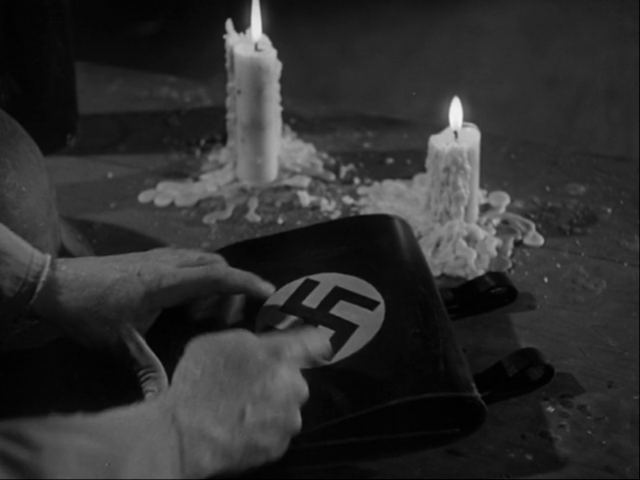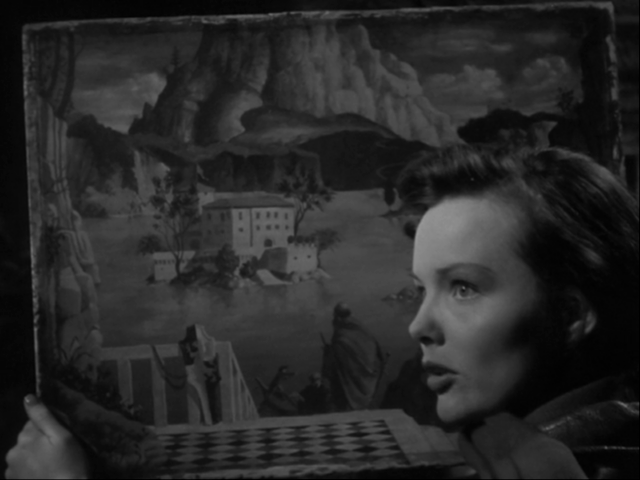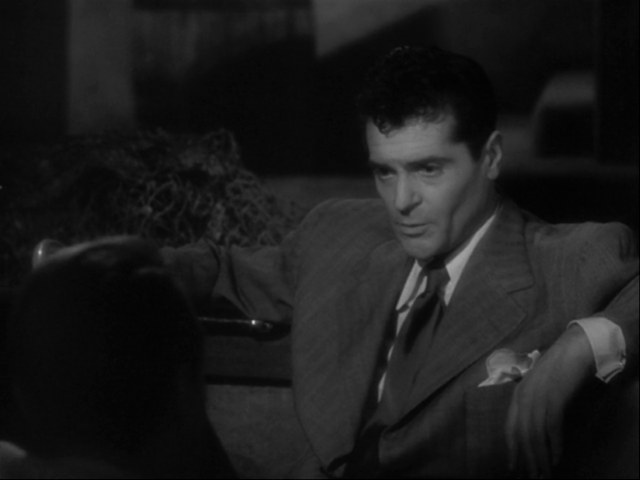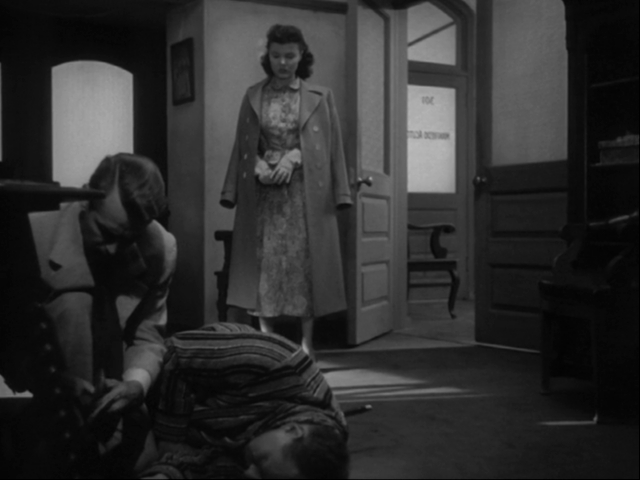A Ladd and Alas

My dog-eared, frayed and ragged copy of Hollywood Director by David Chierichetti is a prized possession. It’s a miraculous book — its author decided to celebrate the artistry of a largely forgotten and despised filmmaker, Mitchell Leisen, and he was able to do it when he could talk to both Leisen and most of his most important collaborators, so we get a critical study, an interview book and an oral history. See if you can pick up a copy if you don’t own it.
The book has very little to say about CAPTAIN CAREY, USA (1950), and dismisses it as very minor, which is arguably fair, but what little it tells us is very useful. The movie stars Alan Ladd as an ex-OSS agent returning to Italy after the war to find the traitor who betrayed him, leading to his being captured, and both his colleague and his true love (Wanda Hendrix) being killed. But there’s an immediate shock upon his arrival — he finds her still alive.



What Chierichetti tells us is that producer Richard Maibaum, later an important screenwriter on the James Bond films, had developed a story built heavily on backstory — we begin post-war, when Ladd sees a painting that tells him there may be a way to discover the traitor, and he vows to do so and kill him. We have no idea what he’s talking about, but we follow him to Italy and his history and motivation gradually become clear.
Except they didn’t — audiences struggled to follow the story and to care — obfuscation and mystery are fascinating up to a point — an unpredictable point — and if they go on too long there’s a risk we disengage.
So Leisen and Maibaum went back and filmed a whole new beginning, set during wartime, where we meet nearly all the key characters, their roles are established, and we SEE the consequences of Ladd’s betrayal.

This must have seemed essential, but would have worried me, not just for the budgetary overage but because you’re removing nearly all the mystery, save for the identity of the traitor. And indeed, the film offers up only two real suspects, and as they’re played by Francis Lederer and Joseph Calleia, there’s no possibility of the eventual revelation being a surprise. Lederer is shifty, Calleia plays it quite straight, but still, he’s the kind of actor who could play a traitor. Making him the baddie seemed like the more intriguing solution, but the fact that Lederer is now married to Ladd’s supposedly-dead lover makes his guilt a more dramatic proposition. Plus, wouldn’t it be convenient if he could get killed so that the leads might end up together?
The added prologue is very action-packed, and this in itself could be a problem, since much of what follows is slower, more atmospheric than exciting. It does make Ladd immediately sympathetic, since we see him young and in love before we see him brooding and vengeful. I’m in two minds about all of this — I think Ladd is better when he has an edge.


I think the movie is better than Chierichetti allows — he tells us so little it’s not certain even if he’d seen it at the time of writing, or if he was going on Leisen’s own estimation of the picture. It’s minor Leisen, but minor Leisen can still be very enjoyable.
CAPTAIN CAREY, USA stars Shane; Nan Tatlock; Alwa Schön; Police Sergeant Pete Menzies; T’Pau; Dr. Leonardo; Louis Louis of the Hotel Louis; Mama Caruso; Charlie Chan; and Tom Thumb.
December 22, 2023 at 6:33 pm
“It’s minor Leisen, but minor Leisen can still be very enjoyable.”
Truer words were never blogged.
For me, MIDNIGHT is as close to perfection as a film can come.
December 22, 2023 at 7:38 pm
Even Billy Wilder had to admit his olod nemesis got that one about right.
December 23, 2023 at 4:06 pm
Should one try to skip the prologue on first viewing?
December 23, 2023 at 4:18 pm
I’m in two minds but I sort of think “no.” The prologue is Leisen’s idea, or at least what he wanted. And it defintely adds some emotional weight to his mission. On the other hand, I’d like to be able to watch the film BOTH ways for the first time, but after viewing one it’s impossible to have an unclouded view of the other.
You could certainly TRY skipping the first 13 mins, and see if it works. It might ruin the film, but it’s a minor film so the experiment might be worthwhile. We can compare notes if you do this.